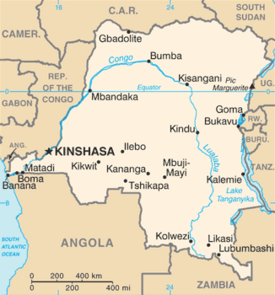An editor has nominated this article for deletion. You are welcome to participate in the deletion discussion , which will decide whether to keep it. |

Articles (arranged alphabetically) related to the Democratic Republic of the Congo include:
Contents
